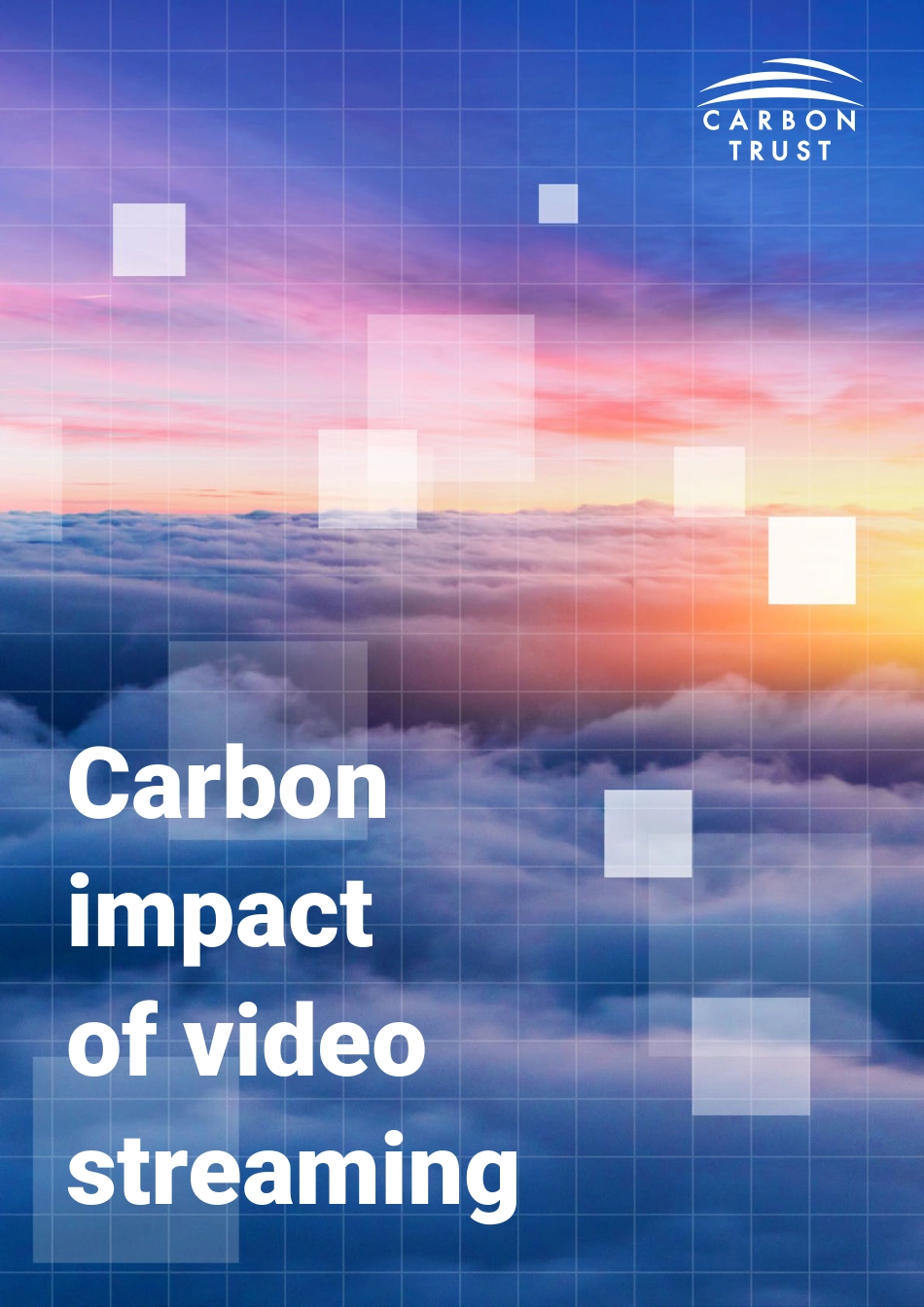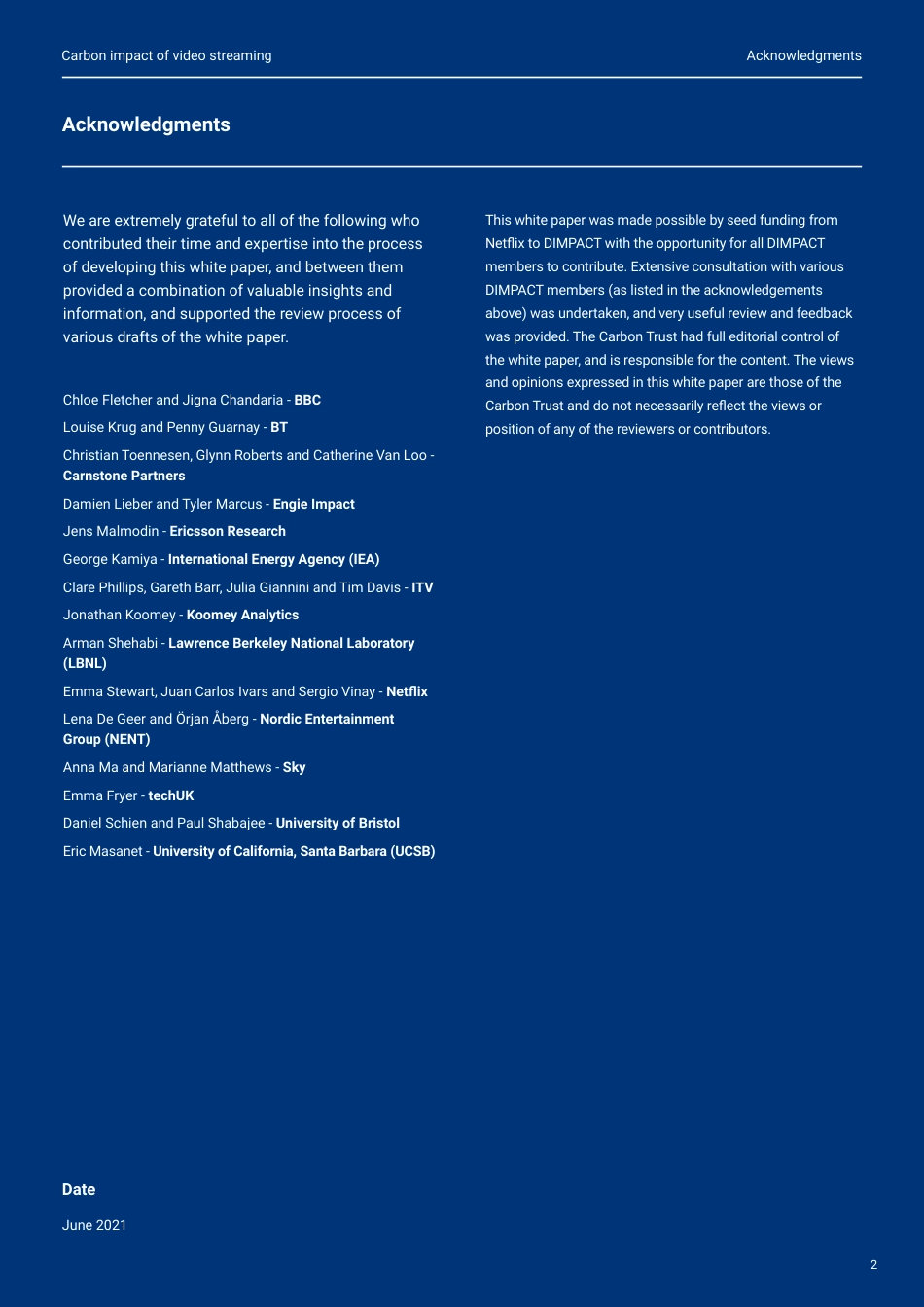Carbon impact of video streaming 2Carbon impact of video streamingAcknowledgmentsWe are extremely grateful to all of the following who contributed their time and expertise into the process of developing this white paper, and between them provided a combination of valuable insights and information, and supported the review process of various drafts of the white paper.Chloe Fletcher and Jigna Chandaria - BBC Louise Krug and Penny Guarnay - BTChristian Toennesen, Glynn Roberts and Catherine Van Loo - Carnstone PartnersDamien Lieber and Tyler Marcus - Engie Impact Jens Malmodin - Ericsson ResearchGeorge Kamiya - International Energy Agency (IEA)Clare Phillips, Gareth Barr, Julia Giannini and Tim Davis - ITVJonathan Koomey - Koomey AnalyticsArman Shehabi - Lawrence Berkeley National Laboratory (LBNL)Emma Stewart, Juan Carlos Ivars and Sergio Vinay - Netflix Lena De Geer and Örjan Åberg - Nordic Entertainment Group (NENT)Anna Ma and Marianne Matthews - SkyEmma Fryer - techUKDaniel Schien and Paul Shabajee - University of BristolEric Masanet - University of California, Santa Barbara (UCSB)AcknowledgmentsThis white paper was made possible by seed funding from Netflix to DIMPACT with the opportunity for all DIMPACT members to contribute. Extensive consultation with various DIMPACT members (as listed in the acknowledgements above) was undertaken, and very useful review and feedback was provided. The Carbon Trust had full editorial control of the white paper, and is responsible for the content. The views and opinions expressed in this white paper are those of the Carbon Trust and do not necessarily reflect the views or position of any of the reviewers or contributors.DateJune 20213Carbon impact of video streamingAcknowl...



